
Two thin dielectric slabs of dielectric constants ${K_1}$ and ${K_2}({K_1} < {K_2})$ are inserted between plates of a parallel plate capacitor, as shown in the figure. The variation of electric field `E` between the plates with distance `d` as measured from plate P is correctly shown by
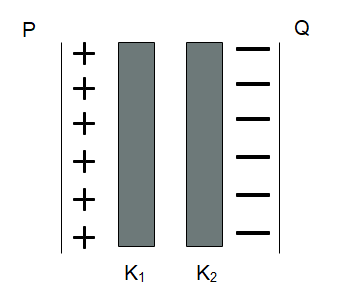
A)
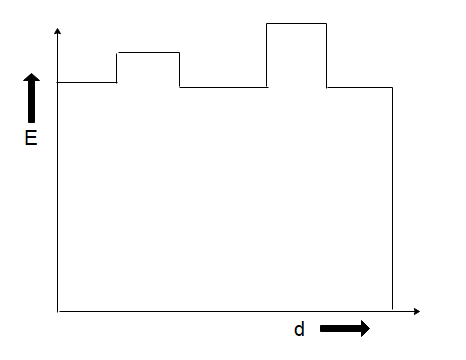
B)
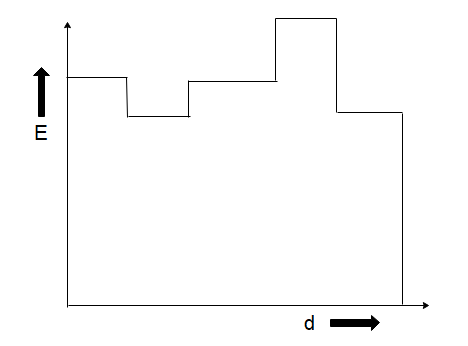
C)
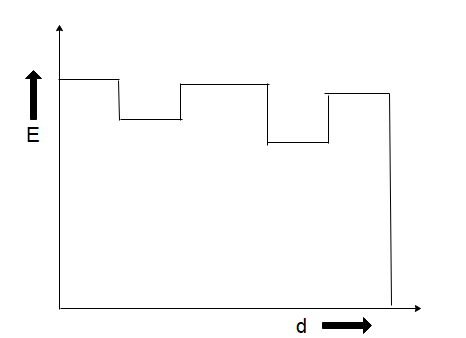
D)
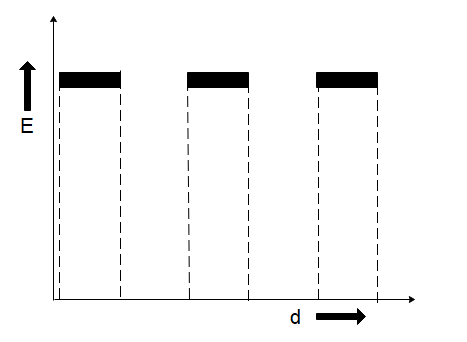





Answer
490.5k+ views
Hint: When a dielectric is present between the plates of a capacitor, it will modify the electric field that exists between the two plates of the capacitor. Charges will be induced in the dielectric such that it will produce an electric field opposing the original electric field.
Formula used:
In this solution we will be using the following formula:
Dielectric field in presence of a dielectric: $E = \dfrac{{{E_0}}}{k}$ where ${E_0}$ is the electric field in the absence of a dielectric and \[k\] is the dielectric constant.
Complete answer:
In the absence of a dielectric field, a uniform electric field is present between the capacitor plates. However, when a dielectric is present, as mentioned in the hint, an electric field will be induced in it such that it will oppose the external electric field. This is due to the polarization of charges inside the dielectric material. Hence the electric field in the region of the dielectrics will be smaller than the external electric field.
Moreover, the stronger the dielectric, the stronger the electric field will be induced, and hence even a lower electric field will exist in that region due to higher opposition of the external electric field.
Since ${K_1} < {K_2}$, the electric field in the region of ${K_2}$ will be much lower than in the region of ${K_1}$.
Hence the correct choice is option (C).
Note:
The electric field induced in a dielectric will always be lower than the external electric field. If a very strong electric field is applied, the dielectric breakdown might take place and then the dielectric will no longer be able to oppose the external electric field.
Formula used:
In this solution we will be using the following formula:
Dielectric field in presence of a dielectric: $E = \dfrac{{{E_0}}}{k}$ where ${E_0}$ is the electric field in the absence of a dielectric and \[k\] is the dielectric constant.
Complete answer:
In the absence of a dielectric field, a uniform electric field is present between the capacitor plates. However, when a dielectric is present, as mentioned in the hint, an electric field will be induced in it such that it will oppose the external electric field. This is due to the polarization of charges inside the dielectric material. Hence the electric field in the region of the dielectrics will be smaller than the external electric field.
Moreover, the stronger the dielectric, the stronger the electric field will be induced, and hence even a lower electric field will exist in that region due to higher opposition of the external electric field.
Since ${K_1} < {K_2}$, the electric field in the region of ${K_2}$ will be much lower than in the region of ${K_1}$.
Hence the correct choice is option (C).
Note:
The electric field induced in a dielectric will always be lower than the external electric field. If a very strong electric field is applied, the dielectric breakdown might take place and then the dielectric will no longer be able to oppose the external electric field.
Recently Updated Pages
Master Class 11 Business Studies: Engaging Questions & Answers for Success

Master Class 11 Computer Science: Engaging Questions & Answers for Success

Master Class 11 Maths: Engaging Questions & Answers for Success

Master Class 8 Science: Engaging Questions & Answers for Success

Master Class 10 Computer Science: Engaging Questions & Answers for Success

Master Class 10 Social Science: Engaging Questions & Answers for Success

Trending doubts
1 ton equals to A 100 kg B 1000 kg C 10 kg D 10000 class 11 physics CBSE

Difference Between Prokaryotic Cells and Eukaryotic Cells

One Metric ton is equal to kg A 10000 B 1000 C 100 class 11 physics CBSE

What is the opposite of entropy class 11 chemistry CBSE

Proton was discovered by A Thomson B Rutherford C Chadwick class 11 chemistry CBSE

1 Quintal is equal to a 110 kg b 10 kg c 100kg d 1000 class 11 physics CBSE




